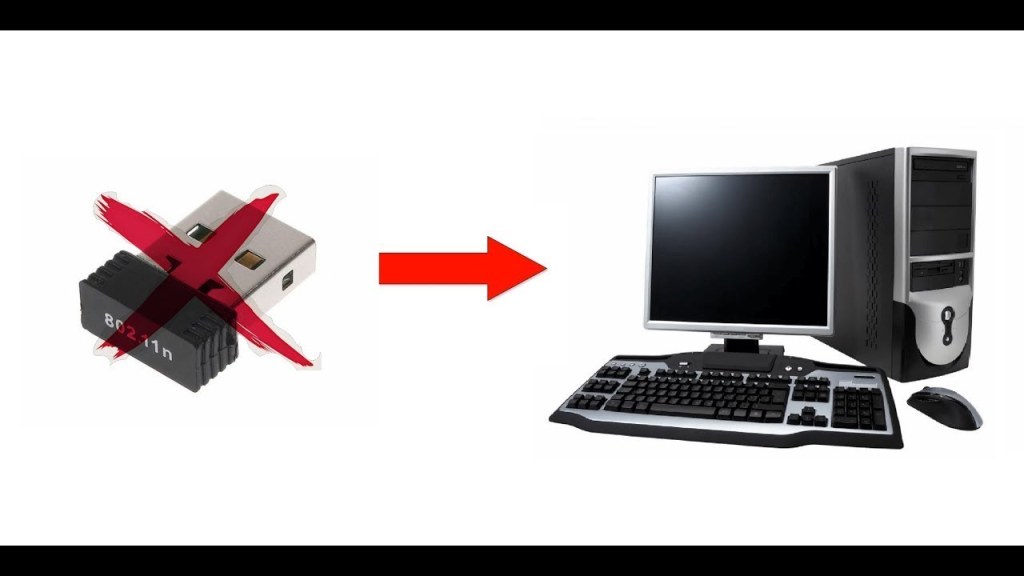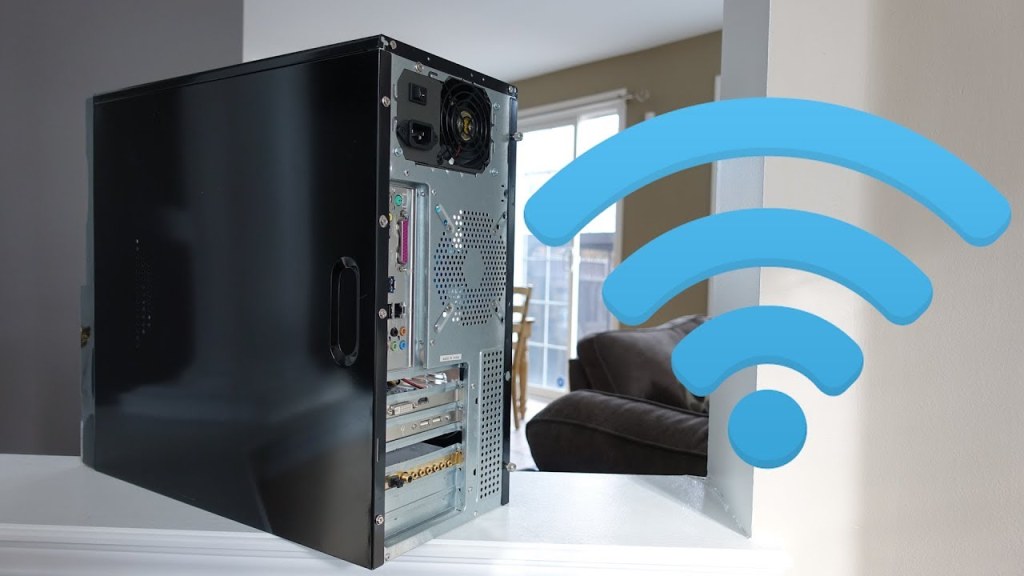Desktop PC Not Connecting to Wifi: Troubleshooting Guide
Introduction
Hello Readers,
Welcome to our troubleshooting guide for resolving the issue of a desktop PC not connecting to wifi. In today’s digital age, a stable internet connection is crucial for both work and leisure. However, encountering connectivity problems can be frustrating and disrupt daily activities. In this article, we will explore the common causes of this issue and provide step-by-step solutions to help you restore your desktop PC’s wifi connection.
Understanding the Problem: What is Causing the Issue?

Image Source: ytimg.com
Several factors can contribute to a desktop PC’s inability to connect to wifi. It can be due to hardware or software-related problems, network configuration issues, or interference from external sources. Let’s delve into each aspect and understand how they can impact your wifi connection.
Hardware-related Problems
Hardware issues can range from faulty network adapters, outdated drivers, or even a malfunctioning router. It’s essential to check the physical components of your desktop PC and router to rule out any hardware-related problems.
Software-related Problems
Software-related problems can stem from outdated operating systems, incompatible network drivers, or firewall settings blocking the wifi connection. Ensuring that your software is up to date and properly configured is crucial to resolving such issues.
Network Configuration Issues

Image Source: ytimg.com
Network configuration problems can arise from incorrect settings on your desktop PC or router. These settings include network SSID, password, security protocols, or DHCP settings. Verifying and adjusting these configurations can help restore your desktop PC’s wifi connection.
External Interference
External interference can disrupt wifi signals and cause connectivity problems. This interference can be caused by neighboring wifi networks, electronic devices, or physical obstructions. Identifying and eliminating these sources of interference is crucial to ensure a stable wifi connection.
Who is Affected by This Issue?
Anyone using a desktop PC and encountering wifi connectivity issues can be affected by this problem. Regardless of the brand or model of your desktop PC, understanding the common causes and troubleshooting methods will be beneficial to all users.
When Does This Issue Occur?
This issue can occur at any time, whether during initial setup, after a software update, or randomly during normal usage. Identifying the specific circumstances when the problem arises can help narrow down the possible causes and expedite the troubleshooting process.
Where Does This Issue Occur?
This issue can occur in any location where you are trying to connect your desktop PC to a wifi network. Whether it’s at home, the office, or a public place, understanding the possible sources of interference and network configurations specific to your location is crucial to resolving the issue.
Why Does This Issue Happen?
The issue of a desktop PC not connecting to wifi can occur due to various reasons. Some common causes include incompatible hardware or software, network misconfigurations, outdated drivers, or interference from external sources. Understanding the underlying causes will help you determine the appropriate troubleshooting steps.
How to Resolve the Issue: Step-by-Step Guide
Now, let’s dive into the step-by-step guide to help you resolve the issue of your desktop PC not connecting to wifi:
Step 1: Check Hardware Connections
Ensure that all hardware components, including the network adapter and router, are properly connected. Verify that there are no loose cables or physical damage that may be hindering the connection.
Step 2: Update Network Drivers
Visit the manufacturer’s website and download the latest network drivers for your desktop PC. Install the updated drivers to ensure compatibility and optimal performance.
Step 3: Restart Your Router
Power off your router, wait for a few seconds, and then power it back on. Restarting the router can resolve temporary glitches and refresh the network settings.
Step 4: Check Network Settings
Verify that your desktop PC’s network settings, such as SSID and password, are correct. Additionally, ensure that the security and encryption settings match the router’s configuration.
Step 5: Disable Firewall Temporarily
Temporarily disable your firewall and antivirus software to check if they are blocking the wifi connection. Remember to re-enable them after troubleshooting to maintain your system’s security.
Step 6: Remove Interference Sources
If you suspect external interference, relocate your desktop PC away from electronic devices, such as cordless phones or microwaves. Additionally, ensure there are no physical obstructions blocking the wifi signals.
Advantages and Disadvantages of Resolving the Issue
Advantages
1. Restored productivity and uninterrupted internet access
2. Improved connectivity for online gaming, streaming, and video conferences
3. Better utilization of online resources and services
4. Enhanced communication through social media and messaging platforms
5. Increased convenience for remote work and online learning
Disadvantages
1. Time-consuming troubleshooting process
2. Potential costs for hardware replacements or professional assistance
3. Temporary disruption of internet access during troubleshooting
4. Learning curve for understanding network configurations
5. Possibility of encountering complex, underlying issues beyond user control
Frequently Asked Questions (FAQs)
Q1: Can a faulty network adapter cause a desktop PC to not connect to wifi?
A1: Yes, a faulty network adapter can prevent a desktop PC from connecting to wifi. It is recommended to check for any hardware issues and consider replacing the network adapter if necessary.
Q2: Do I need to update both my desktop PC’s network drivers and the router’s firmware?
A2: Yes, updating both your desktop PC’s network drivers and the router’s firmware is essential to ensure compatibility and optimal performance. Outdated drivers or firmware can cause connectivity issues.
Q3: How can I check if my wifi network is experiencing interference from neighboring networks?
A3: You can use wifi analyzer apps or software to scan for neighboring networks and analyze their signal strengths. This will help you identify potential sources of interference and adjust your network settings accordingly.
Q4: Can outdated operating systems affect a desktop PC’s ability to connect to wifi?
A4: Yes, outdated operating systems can cause compatibility issues with newer network protocols, resulting in connection problems. Keeping your operating system up to date is crucial for optimal functionality.
Q5: When should I consider seeking professional assistance for resolving this issue?
A5: If you have followed all the troubleshooting steps outlined in this guide and are still unable to resolve the issue, it may be necessary to consult a professional technician. They can provide specialized expertise and recommend further actions.
Conclusion
In conclusion, resolving the issue of a desktop PC not connecting to wifi requires a systematic approach and troubleshooting process. By understanding the common causes and following the step-by-step guide provided in this article, you can restore your desktop PC’s wifi connection and enjoy uninterrupted internet access. Remember to stay patient and seek professional assistance if needed. Good luck!
Friends, remember to always reach out to your internet service provider or consult a professional if you encounter any difficulties or uncertainties during the troubleshooting process. This article aims to provide general guidance and solutions, but individual cases may vary. Stay connected and make the most of your desktop PC’s wifi capabilities!